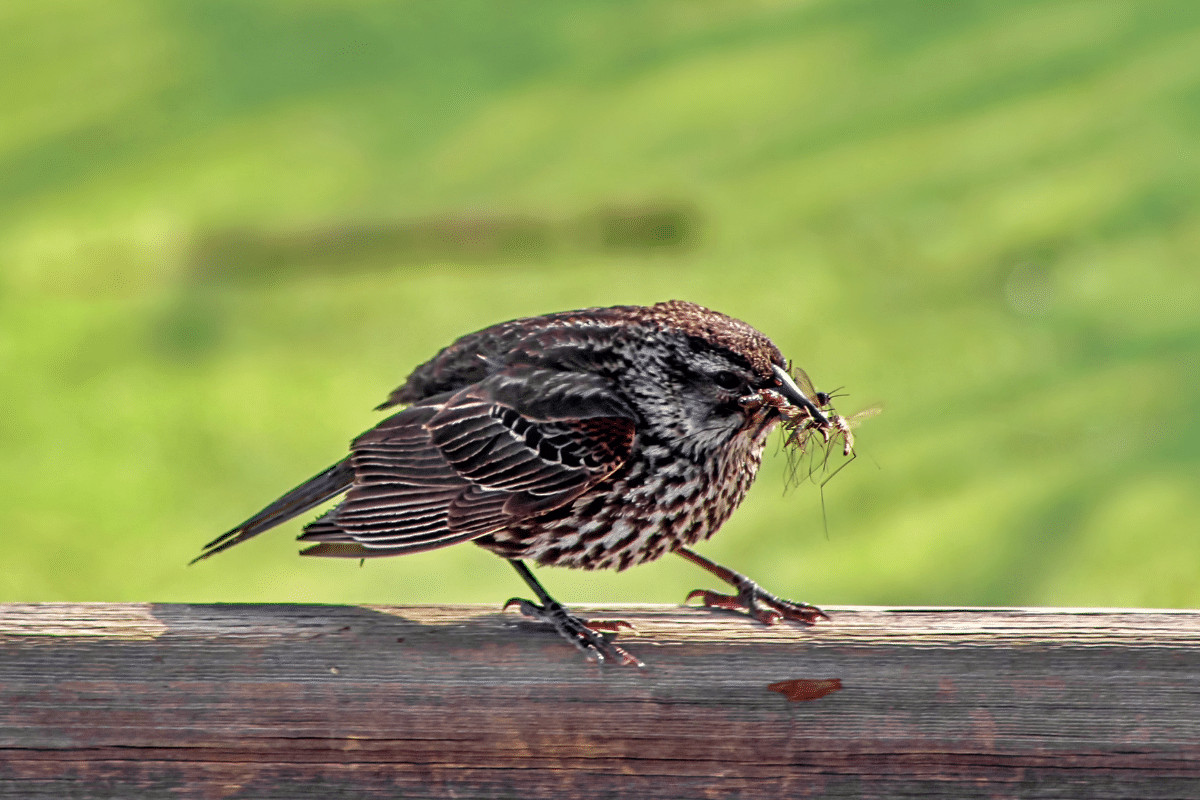Home>Gardening News and Trends>Latest News>Which Of The Following Is A Disadvantage Of Using Bt To Control Insects?


Latest News
Which Of The Following Is A Disadvantage Of Using Bt To Control Insects?
Modified: January 22, 2024
Discover the latest news on the disadvantages of using BT to control insects. Stay informed and make informed decisions.
(Many of the links in this article redirect to a specific reviewed product. Your purchase of these products through affiliate links helps to generate commission for Chicagolandgardening.com, at no extra cost. Learn more)
Table of Contents
Introduction
In the world of agriculture and pest control, one method that has gained significant attention is the use of Bacillus thuringiensis (Bt) to control insects. Bt is a naturally occurring bacterium that produces proteins toxic to certain types of insects. It has been widely adopted as a biopesticide due to its effectiveness in targeting specific pests, its low toxicity to humans and non-target organisms, and its limited impact on the environment.
However, as with any pest control method, there are disadvantages to consider when using Bt. It is important to weigh these drawbacks against the benefits to determine the most appropriate and sustainable approach for insect control.
In this article, we will explore the disadvantages of using Bt to control insects, including the lack of target specificity, limited effectiveness on certain insect species, environmental impact, potential for resistance development, and cost considerations. By examining these factors, we can gain a better understanding of the limitations and challenges associated with Bt usage in pest control.
Lack of Target Specificity
One of the disadvantages of using Bt to control insects is its lack of target specificity. While Bt is effective against certain insect pests, it may also harm beneficial insects and other non-target organisms.
Unlike chemical pesticides that can be more selective in their targets, Bt acts broadly, affecting a wide range of insects. This means that when Bt is applied, it may inadvertently kill beneficial insects such as pollinators or natural predators that play a crucial role in maintaining the ecological balance of agricultural systems.
This lack of target specificity can potentially disrupt beneficial insect populations and have unintended consequences on ecosystem health. It is essential to carefully consider the potential impacts on non-target organisms before implementing Bt as a pest control solution.
Furthermore, certain insect species may be less susceptible to Bt toxins, reducing its effectiveness against them. In such cases, alternative pest control methods may be necessary to address these specific pests.
In summary, while Bt is effective against specific insect pests, its lack of target specificity poses a challenge when trying to protect beneficial insects and non-target organisms. Careful consideration and integrated pest management approaches are crucial to mitigate the potential harm caused by the broad-spectrum nature of Bt.
Limited Effectiveness on Certain Insect Species
While Bt is known for its efficacy against certain insect pests, it may have limited effectiveness on certain insect species. This limitation is due to various factors, including the insect’s biology and its ability to develop resistance to Bt toxins.
Some insect species have natural defense mechanisms that make them less susceptible to Bt toxins. These defense mechanisms, such as thicker cuticles or efficient detoxification systems, allow them to tolerate or even thrive in the presence of Bt-treated crops.
Additionally, insects can develop resistance to Bt toxins over time. When a population of insects is exposed to Bt toxins repeatedly, natural selection favors individuals that carry genetic traits conferring resistance. As a result, resistant individuals survive and reproduce, passing on their resistance genes to the next generation.
This can lead to the development of Bt-resistant insect populations, rendering Bt ineffective in controlling them. The emergence of Bt resistance is a significant concern in pest management strategies, as it diminishes the long-term viability of Bt as a sustainable control method.
To mitigate this issue, it is essential to adopt strategies that minimize the selection pressure on insect populations, such as planting refuge crops that do not produce Bt toxins. These non-Bt crops provide a habitat for susceptible insects, slowing down the development of resistance.
In summary, while Bt has proven effective against many insect pests, it may have limited effectiveness on certain insect species. The development of resistance and the presence of natural defense mechanisms in certain insects pose challenges to the long-term sustainability of Bt as a sole control method. Implementing integrated pest management strategies is crucial to address these limitations and ensure effective pest control.
Environmental Impact
While Bt is often considered an environmentally-friendly alternative to chemical pesticides, it still has some environmental impacts that need to be taken into account.
One potential environmental concern is the persistence of Bt toxins in the environment. Although Bt breaks down naturally over time, its longevity can vary depending on factors such as temperature and soil conditions. If Bt residues persist in the environment, they may have unintended effects on non-target organisms, potentially disrupting the balance of ecosystems.
Furthermore, widespread and repeated use of Bt can lead to the selection of Bt-resistant insect populations, as mentioned earlier. This can result in the need for alternative and potentially more harmful pest control methods, negating the initial environmental benefits of using Bt.
Another environmental consideration is the potential impact on soil microbiota. Bt is a soil-dwelling bacterium, and its application in high doses or frequent use may alter the diversity and abundance of beneficial microorganisms in the soil. These microorganisms play crucial roles in nutrient cycling and soil health, so any disruption in their populations could have long-term consequences for agricultural ecosystems.
Finally, the use of Bt may also impact non-target organisms such as birds, aquatic organisms, and mammals, either through direct exposure or through the consumption of insects containing Bt toxins. These unintended effects on non-target organisms must be carefully evaluated to minimize any adverse ecological impacts.
Overall, while Bt is generally considered to have a lower environmental impact compared to chemical pesticides, it is crucial to consider the potential ecological consequences of its use. Proper implementation and monitoring are essential to minimize any adverse effects on the environment and maintain a sustainable approach to pest control.
Potential for Resistance Development
One of the significant concerns with using Bt to control insects is the potential for the development of resistance. Over time, repeated exposure to Bt toxins can select for individuals within insect populations that are capable of surviving the toxic effects.
Resistance to Bt can arise through various mechanisms. One common mechanism is the alteration of the insect’s receptor sites, making them less susceptible to the toxic effects of Bt toxins. Another mechanism involves the overexpression of detoxification enzymes, which can neutralize the Bt toxins before they can cause harm.
The development of resistance poses a significant challenge to the long-term effectiveness of Bt as a control method. As resistant individuals survive and reproduce, their resistant traits are passed on to the next generation, gradually reducing the efficacy of Bt in controlling the targeted pests.
To mitigate the development of resistance, it is crucial to implement resistance management strategies. These strategies may include rotating Bt crops with other pest control methods, using different Bt toxin variants, or incorporating refuge crops into the agricultural landscape.
By rotating Bt crops with different control methods, the selection pressure on insect populations is reduced, making it less likely for resistance to develop. Additionally, using different variants of Bt toxins can target specific insect populations and lower the chances of resistance developing across all variants.
Incorporating refuge crops, which are non-Bt crops planted in close proximity to Bt crops, provides a habitat for susceptible insect populations. By ensuring a population of susceptible insects remains, the chances of resistance development are minimized.
Resistance management strategies should be implemented in a proactive and integrated pest management approach to maintain the effectiveness of Bt as a sustainable control method for insect pests.
Cost Considerations
When considering the use of Bt for insect control, it is important to take into account the cost implications. While Bt is often seen as a more cost-effective option compared to chemical pesticides, there are still certain cost considerations to be aware of.
One of the factors contributing to the cost of using Bt is the development and production of Bt-based products. Research and development expenses associated with genetically engineering crops to produce Bt toxins or extracting and formulating these toxins into biopesticides can contribute to higher upfront costs.
In addition, the application of Bt may require specific equipment or specialized machinery, which may result in additional expenses for farmers or pest control operators. These costs can vary depending on the scale of implementation and the specific needs of the agricultural operation.
Furthermore, while Bt is generally considered to be less harmful to the environment and non-target organisms, the cost of managing potential resistance issues should also be taken into account. Implementing resistance management strategies, such as rotating Bt crops with alternative control methods or using refuge crops, may require additional resources and efforts.
It is also important to consider the potential impact of using Bt on crop yield and productivity. While Bt can effectively control targeted insect pests, the overall economic benefit may depend on factors such as pest pressure, crop value, and market demand.
However, despite these cost considerations, it is worth noting that the long-term benefits of using Bt, such as reduced reliance on chemical pesticides and the potential for improved environmental and human health outcomes, can outweigh the initial investment.
Ultimately, the cost-effectiveness of using Bt for insect control will depend on various factors, including the specific pest problem, the scale of implementation, and the overall goals and priorities of the agricultural operation.
By carefully evaluating the cost implications and weighing them against the potential benefits, farmers and pest control operators can make informed decisions regarding the use of Bt as part of their integrated pest management strategies.
Conclusion
While Bacillus thuringiensis (Bt) is widely used as a biopesticide to control insects, it is important to consider the disadvantages associated with its usage. These drawbacks include the lack of target specificity, limited effectiveness on certain insect species, potential environmental impacts, the development of resistance, and cost considerations.
The lack of target specificity of Bt can pose challenges when trying to protect beneficial insects and non-target organisms, potentially disrupting the ecological balance. Furthermore, the limited effectiveness of Bt on certain insect species and the development of resistance highlight the need for integrated pest management strategies that incorporate alternative control methods and resistance management techniques.
The environmental impacts of Bt, including its persistence in the environment and potential effects on soil microbiota and non-target organisms, should be carefully evaluated to ensure sustainable pest control practices. Additionally, the cost considerations associated with the development, production, and application of Bt-based products, as well as the management of resistance, need to be taken into account.
While there are disadvantages to using Bt, it continues to be a valuable tool in integrated pest management. When used responsibly and in combination with other control methods, Bt can contribute to effective and sustainable insect control.
Ultimately, the decision to use Bt should be based on a thorough understanding of its limitations and advantages, considering factors such as target pests, ecological considerations, potential resistance development, and economic feasibility. By adopting a holistic, integrated approach to pest management, farmers and pest control operators can achieve effective and sustainable insect control while minimizing the drawbacks associated with Bt usage.




